
Driverless: Intelligent Cars and the Road Ahead
by
Hod Lipson
and
Melba Kurman
Published 22 Sep 2016
The fair was a thrilling, massive 1,200-acre tribute to cutting-edge technologies such as television, electric street lamps, fluorescent lighting, and a new must-have device for emerging middle-class families, the automatic washing machine. GM’s bold exhibit, the “Futurama,” showcased an Automated Highway that by the year 1960 would make “hands-free, feet-free” driving the norm. GM’s Futurama exhibit consisted of a small-scale model of a typical American landscape of the near future. Fairgoers absorbed the scene from the vantage point of moving chairs that carried them through this mesmerizing miniature world.1 Fairgoers sat and glided past tiny cities, farms, stretches of countryside, even an airport in miniature, all seamlessly connected by ribbons of smooth, high-speed automated highways.
…
Figure 6.1 As fairgoers listened, the Futurama’s narrative read, “The world we are now seeing is a vision, an artistic conception, which may undergo many changes as it develops into the great realities of tomorrow.” New York World’s Fair, “Futurama: Highways & Horizons,” 1939. Source: General Motors During the ride, the Futurama’s narrator explained that by the year 1960, regular people would enjoy trouble-free personal mobility on automated highways in cars guided by a system of radio controls (the exact technological details of how, exactly, these radio-controlled cars would work were left purposefully vague).
…
Radio-controlled cars would steer themselves on and off automated highways, comfortably, safely, and economically, ferrying people from their home to their office to the airport, or wherever else their heart desired. Today, it’s difficult to imagine that a model landscape whose chief selling point was high-speed roads and tiny cities would fascinate millions of people. In 1939, however, the American public was fascinated by GM’s utopian depiction of automated highways. GM’s Futurama, one of the most successful exhibits of the fair, attracted an estimated total of ten million riders. On some days, 28,000 people waited for hours in lines that sometimes stretched two miles long.2 GM’s artificial miniature world was great theater, as seductive and magical as the Technicolor Land of Oz in the film The Wizard of Oz (which was released earlier the same year).
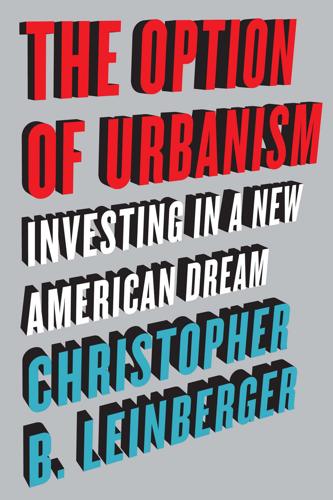
The Option of Urbanism: Investing in a New American Dream
by
Christopher B. Leinberger
Published 15 Nov 2008
wa_id=14&lang=1&s_typ=5. New York in 1939–1940 was the peak of the world’s fair movement; never again would more people attend one. The need for international exhibitions has been met by permanent “world’s fairs” and amusement parks, such as EPCOT and Disney World, art biennials, and the Olympics. General Motors, Futurama brochure from the 1930–1940 New York World’s Fair, 1939. David Gelernter, 1939, The Lost World of the Fair (New York, NY: Free Press, 1995), p. 25. Estimates by author after decreasing attendance for repeat and international visitors as compared to the population of the country in 1940. Joseph J.
…
Bel Geddes dedicated the book “To the fifty million Americans of the generation of our grandchildren to whom all that is written here will be commonplace.” Those grandchildren are the postwar Baby Boom generation. Norman Bel Geddes, Magic Motorways (New York: Random House, 1940). My copy of Magic Motorways is inscribed “To Jack in recollection of a tough job we did together, Norman, 14 March 1940.” Jack is John Dineen, the General Motors manager of the Futurama exhibit. E. B. White, “One Man’s Meat,” Harper’s Magazine, July 1939. Lewis Mumford, “The Skyline in Flushing,” The New Yorker, July 29, 1939. Bel Geddes, Magic Motorways. American Studies at the University of Virginia, “America in the 1930s: 1939 NY World’s Fair,” University of Virginia, http://xroads.virginia.edu/ ~1930s/DISPLAY/39wf/taketour.htm.
…
The fair attracted 45 million people, setting the all-time record for world’s fair attendance.3, 4 16 | THE OPTION OF URBANISM FIGURE 1.4. Looking down on “the many wonders that may develop in the not too distant future . . . the wonderful world of 1960!” at the Futurama exhibit. (Source: Copyright 2007 GM Corp. Used with permission, GM Media Archive) The highlight of the fair was in the “The Highways and Horizons” exhibit, better known as Futurama (figure 1.4). You had to wait in line at least an hour and maybe even two. According to the authoritative commentator’s voice booming out of the hidden speakers in the exhibit’s 600 moving chairs, Futurama offered “a magic Aladdin-like flight through time and space . . . of the many wonders that may develop in the not too distant future . . . the wonderful world of 1960!”

Fighting Traffic: The Dawn of the Motor Age in the American City
by
Peter D. Norton
Published 15 Jan 2008
The motorist replies “How do I prime my face?” 142. McClintock, address to the annual meeting of the American Standards Association, reprinted as “Dat Ole Debbil Speed,” American City 51 (March 1936), 97. McClintock may not have chosen this title. 143. See the narration of GM’s Futurama, its 1939–1940 World’s Fair exhibit, in General Motors, Futurama (1939), a presentation edition of 1,000 issued Oct. 16, 1939. A copy is available at the Special Collections Library, University of Virginia, Charlottesville. 144. H. P. Gillette, “How to Reduce Highway Accidents,” Roads and Streets 70 (March 1930), 123–124. 145.
…
Insurers retained a taste for vivid descriptions of accident casualties, and popular press attacks on speed in general persisted. But there were no important, recognized, ostensibly disinterested traffic safety experts outside of the ASF. 252 Chapter 9 Figure 9.5 At the 1939–40 World’s Fair in New York, General Motors presented Americans with “Futurama,” a vision of the city of 1960. Norman Bel Geddes designed this enormous model, using his model for Shell as a starting point. It was a city rebuilt for the motor age. Source: Norman Bel Geddes, Magic Motorways (Random House, 1940), p. 240. The highway safety model’s pinnacle of success was surely reached on February 22, 1955.
…
Thus explanations of the motor age city cannot begin with city planners’ visions. The automotive city did not begin on the drafting boards of prophetic designers such as Clarence Stein and Henry Wright (the designers of the automotive new town of Radburn, New Jersey) or Norman Bel Geddes (designer of General Motors’ “Futurama”: its vision of the city of 1960 presented at the New York World’s Fair of 1939–1940). The most effective proponents of the motor age city saw more possibilities in highway engineers, who were represented as mere technicians responding almost automatically to the demands of consumers (gasoline-tax-paying motorists). 131.
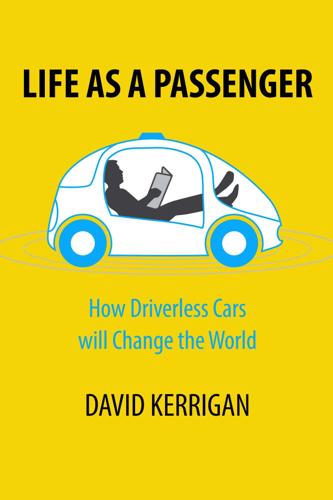
Life as a Passenger: How Driverless Cars Will Change the World
by
David Kerrigan
Published 18 Jun 2017
From Science Fiction to (Almost) Fact “The car just drove around the truck, it steered itself. I hate it! I like to make my own decisions” Michael Knight drives KITT for the first time in Knight Rider The dream of a self-driving car first appeared in the pages of science fiction and then in the General Motors (GM) Futurama display at the 1939 New York World’s Fair.[75] Both RCA and GM experimented in the early 1960s with road-based systems to maintain vehicles a safe distance apart. Computing power didn’t catch up with our imaginations until the 1980s, when Carnegie Mellon University came up with a robot Chevy van and Bundeswehr University Munich developed an autonomous Mercedes van.[76] But these prototypes were unable to function in anything but the most limited circumstances and received little public attention.
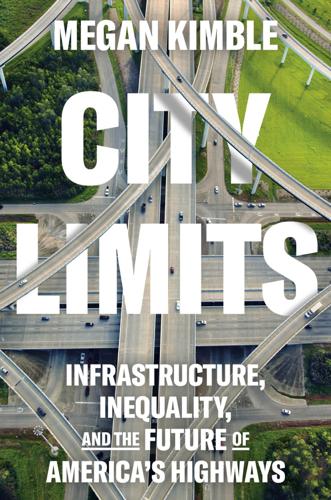
City Limits: Infrastructure, Inequality, and the Future of America's Highways
by
Megan Kimble
Published 2 Apr 2024
His vice president—who had already turned down the pitch twice—was less enthralled. “It won’t sell a single automobile,” he said. “It sells the future,” Bel Geddes replied. “With the promise that every citizen can own a piece of that future for the price of a General Motors’ automobile.” Sloan approved Bel Geddes’s plan on the spot, eventually spending $6.7 million—more than $145 million today—on the thirty-five-thousand-square-foot model called Futurama. The New York World’s Fair opened on a hot, stormy day in April 1939; by the time it closed a year and a half later, forty-four million people had streamed through its gates. Many headed straight to the Highways and Horizons exhibit and queued up outside the bright white building, waiting for hours before they finally got a reprieve from the summer sun and descended into the cool dim of the Futurama model.
…
See North Dallas (Freedman’s Town) Freeway Fighters Network, 111–12 Freeways Without Futures (2023, Congress for the New Urbanism), 277 Frisch, Erik, 207–208, 215 Fundamental Law of Road Congestion, 16 Futurama (1939 World’s Fair), 22, 23–24 G Gaston, Jasmine, 152–54, 165, 233 General Motors (GM), Futurama at 1939 World’s Fair, 22, 23–24 George P. Mitchell: Fracking, Sustainability, and an Unorthodox Quest to Save the Planet (Steffy), 69 Georgetown Climate Center, 273 GI Bill, 41 GMC Hummer (electric), 272 Goodman, Matt, 251 Goodspeed, Robert, 119 Graham, Jeff, 164 Graham, Susan, 61–62, 64, 135, 233, 234, 267 Grand Parkway, 143 Greenfield, Adam basic facts about, 75–76 bicycles and, 75–76 I-35 Capital Express South groundbreaking protest, 194–95, 196 on effect of widening highways, 165 lawsuit against TxDOT and, 192–93 removal of I-35 and, 74, 78 Rethink35 and, 79, 110, 111, 190, 192–93 I-35 Capital Express North groundbreaking, 261 Stop TxDOT I-45 and, 163 greenhouse gas emissions Colorado’s commitment to reducing, 276 due to I-35 Capital Express project, 255 from electric GMC Hummer, 272 highway expansion and, 165, 273, 280–81 housing density and, 146, 273 Infrastructure Investment and Jobs Act and, 273 measures needed to reduce, to meet targets, 272–73 miles driven and increases in, 272 NHHIP and, 254–55 from transportation, 13, 274 Greer, Dewitt, 8–9, 17 Guadalupe Neighborhood Development Corporation (GNDC), 218, 219, 220–22, 223–25, 278–79 Guidry, Curley basic facts about, 227, 228, 231 O’Nari Burleson and, 38 expansion of I-10 and, 231–32 opening of I-10, 40 voluntary resolution agreement between TxDOT and FHWA and, 282–83 Guidry, Henry, 40 Guidry, O’Nari, xv (map), 227–29 basic facts about, 35 on effect of I-10 on Fifth Ward, 44 in Fifth Ward, 36 Curley Guidry and, 38 in Kashmere Gardens, 37 H Halbert, Jon, 122, 123 Halbert, Linda, 122, 123 Hancock, Brandon, 49–50 Harbor Drive (Portland, Oregon), 53 Hardy, James, 202 Harper-Madison, Natasha, 72–74, 80 Hawkins, Jerry, 250 Hendrickson, Brandye, 263–64 Herdon, Anna, 46 Hidalgo, Lina, 63, 91 highway removal.

Road to Nowhere: What Silicon Valley Gets Wrong About the Future of Transportation
by
Paris Marx
Published 4 Jul 2022
The Coming Fight for the Sidewalk 8. The Real Futures That Tech Is Building 9. Toward a Better Transport Future Conclusion Acknowledgments Notes Index Introduction I have seen the future. From April 30, 1939, to October 27, 1940, five million people walked through the doors of General Motors’ Futurama exhibition at the New York World’s Fair. As they left, they were each given a pin inscribed with those five words—and they believed it. Coming out of the depths of the Great Depression, people had lost their hope for the future. Poverty was a widespread reality, and there was no time to think about grandiose visions of a transformed society when every day was a struggle just to put food on the table.
…
They were driverless in the sense that they did not have a driver behind the steering wheel and so hid the human labor for spectacle, which is not as distant from what is happening today as it may seem. Self-driving cars became a common feature of the pulp science fiction of the time, and even made their way into seemingly more realistic visions of the future. General Motors’ Futurama exhibition at the 1939 World’s Fair in New York not only imagined millions more automobiles on the road and elevated pedestrian walkways to separate people and cars, but automated highways where vehicles were guided with radio control. The idea was that all these innovations would be in place by 1960, and, while the suburbs and expressways became more common in the following two decades, the technologically enhanced highways did not.
…
Either way, people are expected to use a service mediated by an application that benefits one or more tech companies not only by producing a transaction but by creating data that can be fed into an automated system or resold to other companies who can derive value from it. This is a vision of mobility that is hostile to pedestrians in a different way than early automotive concepts like General Motors’ Futurama with its wide highways. Instead, even the sidewalk is imagined to be reoriented for other uses. At the same time as tech has been aggressively trying to get us to stop walking, it has also been creating a service economy designed to deliver whatever it is people want to their doorsteps as quickly as possible.
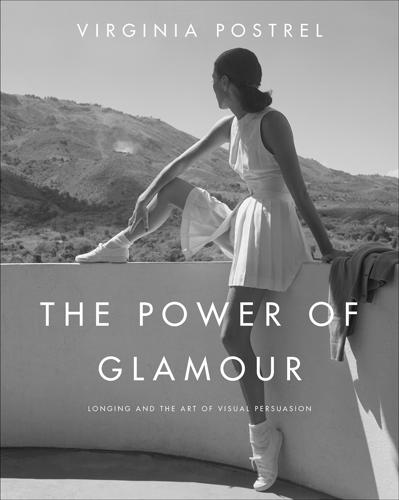
The Power of Glamour: Longing and the Art of Visual Persuasion
by
Virginia Postrel
Published 5 Nov 2013
“The great, crushing, all absorbing city of today . . . would no longer be a planless jumble of slum and chimney, built only for gain, but an effective instrument for human activities, to be used for the building of a better world of tomorrow.”61 Along with this seductive model of a green and pleasant urban order, the fair included many corporate attractions, from Westinghouse demonstrating an automatic dishwasher to AT&T offering free long-distance calls—and, of course, the famous General Motors Futurama, which beat out Democracity as the fair’s most popular attraction. Latter-day critics condemn the fair for allowing commercialism to taint its technocratic vision. The fair, its president Grover Whalen had written, would allow the visitor to “gain a vision of what he might attain for himself and his community by intelligent, cooperative planning toward the better life of the future.”
…
It was filled with appropriate music, and an announcer was describing all these wonderful things as they went by, these raindrop cars, these air-conditioned cities.65 The Futurama was enticing because visitors never considered what it might feel like to be someone else’s toy. With its god’s-eye perspective, the exhibit also gave visitors the illusion of experiencing the future without actually negotiating its quotidian details. The exhibit was exciting, so by implication the life it represented would be, too. Sponsored by General Motors, the Futurama sold cars and the superhighways to carry them. But it didn’t recreate the feeling of driving a car, even a fast one. Instead, it made visitors feel like they were flying. Since passenger air travel was still rare, that feeling itself felt futuristic. The Futurama anticipated a future of suburbs and interstate freeways that looked a lot like the real 1960.
…
Frank, 62 Friedman, Alice, 18, 252n79 Friedman, Thomas, 244n10 Frissell, Toni, 2, 5, 25, 25, 212 furs, 20, 20, 99, 131, 193, 210, 215 Furman, Michael (photographer), 78 Futurama, at World’s Fair, 183, 191–93 future, modernity’s glamour and, 178–186, 179, 183 G Gable, Clark, 60, 175 Galella, Ron, 86, 86, 114 Galison, Peter, 90 Garbo, Greta, 22–23, 34, 100–101, 101, 110 Gardner, Diane, 75 Garland, Hamlin, 165 Garnaut, Michelle, 133 Gay Divorcée, The (film), 82, 212 Gehry, Frank, 122 General Motors. See Futurama, at World’s Fair Gervex, Henri, 151 Gibson, Charles Dana, 141–42, 141, 166, 174 Gibson Girl, as icon, 166–69, 166, 167, 169 Gilman, Charlotte Perkins, 168–69 Gioventu fascista, 190 Givhan, Robin, 4, 79–80 “Glamorous” (song), 210–11, 216 glamour, 2, 3–8, 5, 6, 7 familiarity, fragility, and loss of, 20–21 as form of nonverbal rhetoric, 3–6, 10–11 as illusion, 11–13 as inspiration for life-changing action, 6–7, 46–48 as interaction between object and audience, 12 reality distortion aspect of, 21–23, 22 revelation of emotional truths, 36–38, 221–22 spelling of, 4, 249n6 subjective nature of, 209–15 subjective nature of, and similarity to humor, 17–20 terrorism and, 220–21 used as sales tool, 13–17 utopian parody and wised-up glamour, 216–18 Glamour: A History (Gundle), 138, 245n3 Gleed, Edward C., 25 Goldberg, Vicki, 183, 184 Goldberger, Paul, 130, 244n3 Golden State.

One Less Car: Bicycling and the Politics of Automobility
by
Zack Furness
and
Zachary Mooradian Furness
Published 28 Mar 2010
The 1920s and 1930s was a period when urban space was socially reconstructed for automobility, and also a pivotal moment in the nation’s gradual though comprehensive shift away from bicycles and mass transit toward the full-blown car culture previewed in the Shell Oil City of Tomorrow campaign (1937) and the General Motors (GM) Futurama exhibit at the 1939 World’s Fair, both designed by norman Bel Geddes.13 Futurama, which was part of the larger Highways and Horizons exhibit staged by GM, featured a massive highway infrastructure on par with those proposed by French architect/ planner le Corbusier in the 1920s and 1930s: an urban vision highlighted by concrete seas of high-speed motorized traffic.
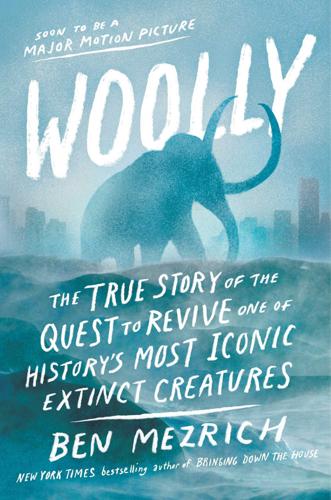
Woolly: The True Story of the Quest to Revive History's Most Iconic Extinct Creature
by
Ben Mezrich
Published 3 Jul 2017
In the IBM Pavilion, he’d had the chance to see a mainframe computer up close. In the Ford Motor Pavilion, he’d taken a ride in a quad of Ford convertibles along a skyway whose scenery traced the history of life on Earth, from the dinosaurs through the present to an imagined future not unlike the one depicted by their competitors at GM in Futurama. Walking next to his mother past a domed car that looked more like a grounded jet airplane, with fins supporting what looked to be rocket tubes and wheels that might have twisted flat for takeoff, Church felt his mom’s hand on his shoulder. He knew she could feel that he was trembling, and he half expected her to diagnose him with some new neurosis or disease.
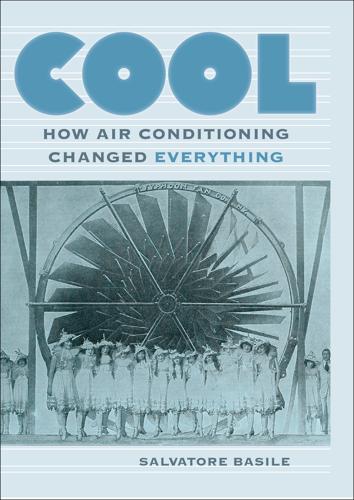
Cool: How Air Conditioning Changed Everything
by
Salvatore Basile
Published 1 Sep 2014
Louis), 70–71, 104 New York to the North Pole, 71 1929 World’s Fair (Barcelona), 145 1933 World’s Fair (Chicago), 151, 162, 181, 182 Dymaxion Car, 162, 162n, 188 Frigidaire House, 151 House of Tomorrow, 151, 153 Masonite House, 151 Official Guide Book, 151 1939–40 World’s Fair (New York), 162n, 175, 181–182, 208 Carrier Igloo of Tomorrow, 175–176 General Motors Futurama, 162n television debut, 208 1964–65 World’s Fair (New York), 226 1982 World’s Fair (Knoxville), 241 “A/C Pee,” 2 Ackermann, Marsha, 141, 224 Act One, 121 “advertising air,” 119, 223 Air and Ventilation of Subways, The, 85 Air-Conditioned Nightmare, 224 “air conditioning” (phrase), 92 air-conditioning equipment and methods: absorption chiller, 246 Apparatus for Cooling, Purifying and Drying Air (see also Nevo), 72, 73, 95, 240 Apparatus for Treating Air (see Carrier, Willis); Barry’s Ventilating and Cooling Apparatus, 157 and beds, 3, 36, 37, 151–153, 152, 163 and blackouts or power outages, 228, 230, 234, 253–254 central, 99, 172, 175, 179, 180, 181, 182, 187, 191–192, 193, 195, 197, 198, 200, 214, 224, 229, 238 console, 151, 152, 179 Dessicant Enhanced eVaporative air conditioner (DEVap), 241, 242 district cooling, 247 and electrical demand, 1, 100, 145, 198, 228, 230–231, 232, 233, 238, 240, 241, 247, 253, 254 electronic (see thermoelectric); geothermal, 238, 247 Improved Air Cooling Apparatus, 50 Scotch Webbing Evaporator, 155 solar-powered, 241–242, 247 as status symbol, 143, 176–178, 178, 187, 193, 197, 214, 220, 221, 230, 251 stored-ice cooling, 247 thermal compressor, 242 thermoacoustic, 240 thermoelectric, 198, 240 water-filled chilled ceiling, 246 window, 1, 2, 151, 179, 194, 195, 197–198, 224.
…
The result was exactly the sound any self-respecting spaceship would make. *Not to everyone. Heating and Ventilating ultimately ran a sour-toned diatribe, “Will Air Conditioning Cabinets Follow Radio’s Bad Example?” *Subconsciously or not, the Dymaxion Car would be resurrected at the 1939 World’s Fair. The General Motors Futurama exhibit dramatized the “world of 1960”—and according to GM, those citizens would travel in teardrop-shaped air-conditioned cars. *Planes, too. In the very first passenger airlines of the 1920s, planes traveled slowly enough (90 mph), and at low enough altitudes, that passengers were encouraged to open windows if they wanted an in-flight breeze.

The Big Roads: The Untold Story of the Engineers, Visionaries, and Trailblazers Who Created the American Superhighways
by
Earl Swift
Published 8 Jun 2011
Hilts, "Planning the Interregional Highway System," Highway Research Board: Proceedings of the Twentieth Annual Meeting (Washington, DC: HRB, 1940). [>] Among those praising...: Miller McClintock letter of May 5, 1939, to Pyke Johnson, copied to the Chief (Archives). [>] The man receiving...: Roland Marchand, "The Designers Go to the Fair II: Norman Bel Geddes, the General Motors 'Futurama,' and the Visit to the Factory Transformed," Design Issues 8, no. 2 (Spring 1992); Robert Coombs, "Norman Bel Geddes: Highways and Horizons," Perspecta 13 (1971); Paul Mason Fotsch, "The Building of a Superhighway Future at the New York World's Fair," Cultural Critique 48 (Spring 2001); "Tomorrow's America Modeled in 'Futurama,'" Popular Mechanics, July 1939; Dimendberg, "The Will to Motorization"; Douglas Adams, "Norman Bel Geddes and Streamlined Spaces." [>] You were then directed...: Quotes from the narration are from the Futurama script (THM). [>] Bel Geddes described...: Robert Coombs, "Norman Bel Geddes: Highways and Horizons"; Marchand, "The Designers Go to the Fair II." [>] They could step into a full-scale...: Official Guide Book of the New York World's Fair 1939 (New York: Exposition Publications, 1939). [>] Among their critics...: "Rebuilding Our Cities: Parasitic Modes of Life Must Go, Lewis Mumford Argues," Newsweek, April 18, 1938; Time, April 18, 1938. [>] "Mr.
…
The Chief wasn't impressed, either, and thought Bel Geddes a crackpot; the last thing the country needed was fourteen-lane bands of concrete crisscrossing the hinterlands. MacDonald was deeply annoyed when the White House hosted an informal stag dinner for the designer in late March 1939, shortly before the fair opened—even though much of the discussion centered on Toll Roads and Free Roads. Perhaps sensitive to such doubts, GM's high command emphasized in public comments that Futurama was not intended as a literal forecast of the roads to come, but, in the words of company president William'S. Knudsen, " to give expression to our belief that such development will take place on an important scale and perhaps within a shorter period of time than many people now realize."
…
Without question, the exhibit made MacDonald's job easier—nothing he did could have so whetted the public's appetite for modern urban highways. And the exhibit's timing couldn't have been much better, coinciding as it did with the release of the bureau's opus. Still, the Chief avoided acknowledging Bel Geddes. When he was called on to speak at a dinner with GM officials in November 1939, he chose a narrow path for his praise: Futurama had been good publicity for the highway industry. " Those of us who are in the highway field, as public officials, have lacked a public relations department to sell that idea to the public on the scale that you are selling it here," he said. " On behalf of the Public Roads [administrators] in the Government, and my associates in the highway field, we express our profound thanks to General Motors for doing this public relations job for us, and for doing it so well."

Chasing the Moon: The People, the Politics, and the Promise That Launched America Into the Space Age
by
Robert Stone
and
Alan Andres
Published 3 Jun 2019
The optimistic glimpses of the world yet to come reflected the national zeitgeist of the Kennedy years, coinciding with the heady period when humans first entered outer space. It was a time when it was assumed the United States would undertake big challenges and successfully meet them. General Motors’s popular Futurama exhibit took visitors on a trip to the year 2024. Highly detailed models depicted modernist underwater cities, massive space stations in rotation as they orbited the Earth, and the first human colonies on the Moon. It was an extension of what Wernher von Braun, Collier’s, and Walt Disney had forecast a decade earlier.
…
Clarke was impressed with Kubrick’s near-insatiable desire to understand almost everything, from technology to music, and art to philosophy. It was a unique meeting of two avidly curious and creative minds. A few days after their first meeting, Clarke and Kubrick traveled to Flushing Meadows to see corporate visions of the future. At the General Motors Futurama, they saw models of the rotating space stations and lunar colonies, which they would later reinterpret in the epic film they were already discussing. Clarke had jokingly begun referring to their project as How the Universe Was Won; a year later it was given the tentative title Journey Beyond the Stars; and finally, when released four years later, it was known as 2001: A Space Odyssey.
…
“We choose to go to the Moon in this decade and do the other things, not because they are easy, but because they are hard; because that goal will serve to organize and measure the best of our energies and skills, because that challenge is one that we are willing to accept, one we are unwilling to postpone, and one we intend to win.” President John F. Kennedy at Rice University in 1962. A human settlement on the Moon in the year 2024, presented as part of General Motors’ Futurama exhibit at the 1964–1965 New York World’s Fair. Astronaut Ed White becomes the first American to walk in space during the June 1965 Gemini 4 mission. He and James McDivitt were the first NASA astronauts to prominently display the American flag on the shoulder of their space suits.
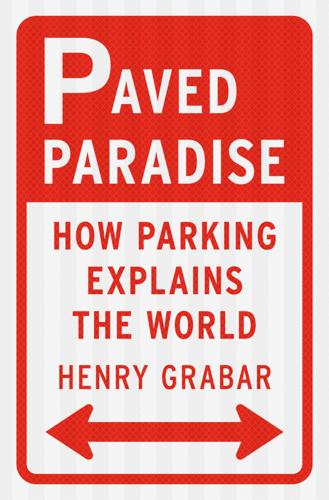
Paved Paradise: How Parking Explains the World
by
Henry Grabar
Published 8 May 2023
After a personal request from Gruen, Albert Einstein wrote a letter of support for the group’s performances; Irving Berlin helped them polish their tunes before two Broadway runs. Gruen had even more luck in architecture. To pay the bills during his dalliance in musical theater, the Viennese refugee found work in New York on the sensational General Motors “Futurama” exhibit at the 1939 World’s Fair. Norman Bel Geddes’s model city became the fair’s runaway attraction, mesmerizing visitors with a vision of the future in which car traffic had been seamlessly integrated alongside, but separate from, the city’s pedestrian life. By 1941, when he shortened his name from Gruenbaum, Gruen’s English was good enough to begin outlining for U.S. trade journals the theories of shopping psychology on which he would build his career.
…
See Downtown Business Men’s Association The Death and Life of Great American Cities (Jacobs), 62 Death by Parking (Van Horn), 93–94 decentralization, 51, 55–56, 57, 73 DeLano, Everett, 16–17 Delanoë, Bertrand, 275 delivery companies, 259–60, 272 Del Mar Times (newspaper), 16–17 Democracy in America (de Tocqueville), 269 Density Bonus Law, in California, 206 Denver, Colorado, 20, 56, 57 Department of Energy, U.S., 80 Department of Housing and Urban Development (HUD), 192, 221 Department of Justice, U.S., 205 DePinto, Carl, 107–8, 110, 111–12 Des Moines, Iowa, 75 Detroit, Michigan, 59–60, 65, 74, 152–53 developers, 48, 51, 62, 181, 189–92, 213 Grubb as, 216–21 Hitzke as, 5–13, 14–18, 20, 204 Katz, D., as, 99–100, 103–4, 113 parking requirements effect on, 151, 162, 193, 206, 280 Shomof as, 188–89 Devlin, George, 67–68 dingbat, parking model, 183 diplomats, UN, parking enforcement of, 42–43, 44–45 Disney, Walt, 105 Disney World, 105–6 disputes, parking, x, 22–23, 262 Dodger Stadium, LA, 75 Doherty, Brian, 126 Don’t Park There (movie), 54 double-parked vehicles, 42, 53, 80, 260, 262–63, 277 downtown, 29, 52–53, 54, 58–59, 72 Gruen designs for, 60–64, 84, 105 LA, 172–75, 188–94 Downtown Business Men’s Association (DBMA), 173–74 Drejka, Michael, 23 drivers, xvii, 25, 81, 280 driveway tax, LA, 78 driving, xvi, 79–80, 81–82 effect on housing, 178 free parking effect on, 160–61 Droste, Lori, 210 Duany, Andres, xiii–xiv Duda, Turan, 182 Duke University, Parking & Transportation at, 110, 111–12 Dumbo, New York, 252, 254 Dunham, Daniel, 185 E Eckman, Meghan, 93 Edge City (Garreau), 178 Edina, Minnesota, Southland shopping center in, 60 Eisenhower, Dwight D., 73 electric vehicles, 226, 278–79 Eller, Carol, 96 Emanuel, Rahm, 140–41, 142, 200 Empire State Building, xiii enforcement, parking, 40, 42–43, 44–45, 49–50 Eno, William Phelps, 42, 53, 56, 57, 248 environment, xiv, 76–79 Environmental Protection Agency, U.S., 87, 99 Equal Protection Clause, Fourteenth Amendment, 28 equipment, for parking garages, 112 Essex, Massachusetts, 205 Europe, 65, 79 excess, parking, 69, 71, 73 F Facebook, Shoupistas on, 148 Fannie Mae, 223–24 Farmer, Paul, 147 fear, of parking shortage, x, xv, xvi, 80 Federal Highway Administration, U.S., 72 Fehr & Peers, 258 Feinstein, Dianne, 168 Felt, Mark, 92 Ferguson, Missouri, 163–64 Ferris Bueller’s Day Off (movie), 107 Fields, David, 85 Finley Forest housing association, 23 Fioretti, Bob, 126 Five Points, Denver, 20 Flannery, Michael, 95–96, 97–98 Flatiron, Manhattan, 254–55 flooding, in cities, 76–77 Florida, 23, 92 Flushing, Queens, xiv Follett, John, 66–67 food trucks, 250–51 Forbes (magazine), 99 Forbidden City tour, 176–77, 184, 186–88 Fort Worth, Texas, Gruen in, 60–63, 84 four-plus-ones, in Chicago, 204–5 Fourteenth Amendment, Equal Protection Clause in, 28 France, Paris, 274–75 Francis, Pope, 3 Freddie Mac, 241 free parking, 81, 83, 148, 162, 172, 267 affordable housing relation to, 21–22, 282–84 effect on citations, 163–64 effect on traffic, 160–61, 200 Shoup on, 150–51, 160 traded for free transit, 264–66 front porches, 237–38 Fullerton, California, 228–30 Fulton, Bill, 165–67 Futurama exhibit, General Motors, 58 G Garage Employees Union, of Manhattan, 101–2 garage parking, 69–70, 86, 92, 173, 275, 279 cost of, 33, 45 equipment for, 112 municipal, 73 in New York, 99–103 rent relation to, 219–21, 280 SpotHero using, 119–20 street parking compared to, 164–65, 167 in Texas, 63 theft from, 94–96, 97–98 garage rock, 240 garages, private, 236–40, 242 ADUs in, 229–32, 233–35, 241, 242–45 Garcia, Kathryn, 271 Garofalo, Janeane, 9 Garreau, Joel, 178 gas usage, sprawl effect on, 80–81 Geddes, Norman Bel, 58 Gehl, Jan, 254 Gehry, Frank, 108, 191–92 General Motors, Futurama exhibit of, 58 Gennawey, Sam, 105 Genovese crime family, 101–3 George Costanza (fictional character), 91 Georgia, Cobb County, 109 Gifford, Bill, 15 Gilmore, Tom, 189, 190–91, 192 Goldberg, Bertrand, 128 Gotbaum, Betsy, 46 Gottlieb, William, 162 government employees, 43, 45, 46–47, 49 Granite Properties, 221–22, 223 Grant Park Garage, Chicago, 72 Greater London Authority, UK, 274 greenhouse gas emissions, 78–79 green space, parking requirements effect on, 183–84 Greenwich, Connecticut, 9 Gricco, Anthony, 95–96, 97–98 gridlock, 42, 43, 52–53 Griffin, Walter Burley, 238 Griffith, Greg, 268 groundwater absorption, 78 Grubb, Clay, 216–18, 219–20, 221 Gruen, Victor, 51, 57, 66, 71–72, 87, 184 downtown designs of, 60–64, 84, 105 The Heart of Our Cities by, 64–65 park-once strategy of, 200–201 shopping center designs of, 58–60, 65 Guo, Zhan, 274 H Habitat for Humanity, 205, 282 Hales, Charlie, 240 Hammerschlag, John, 113–17, 120 Hardwick, Jeffrey, 59 Harris, Kamala, 39 Hartford, Connecticut, 86–87 Harvard, Bureau for Street Traffic Research at, 53 Hastings, Andrew Glass, 206 Hawaii, kapu violations in, 24 Hayes, Shirley, 255–56 The Heart of Our Cities (Gruen), 64–65 Hecht department store, 68 Herculaneum, parking in, xv Herzog, Jacques, 92 Hickenlooper, John, Daley, R.
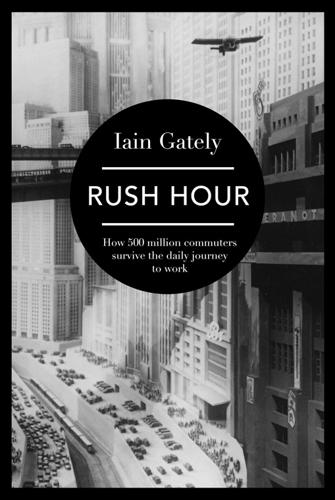
Rush Hour: How 500 Million Commuters Survive the Daily Journey to Work
by
Iain Gately
Published 6 Nov 2014
The Milwaukee Sentinel waxed lyrical over the ‘ghost’: ‘Driverless, it will start its own motor, throw its clutch, twist its steering wheel, toot its horn, and it may even “sass” the policeman at the corner.’ Whether the phantom actually appeared or not is unknown. The next examples of autonomous autos materialized at General Motors’ Futurama exhibition at the 1939 New York World’s Fair, which proclaimed that the teardrop-shaped model vehicles that streamed along its miniature highways would communicate with each other and the environment via radio waves, and would be partially autonomous, in the sense that they would be controlled by a traffic management system as well as by their drivers.
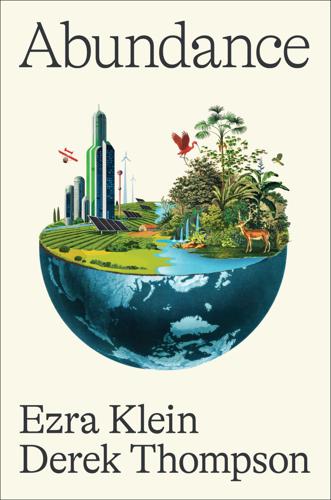
Abundance
by
Ezra Klein
and
Derek Thompson
Published 18 Mar 2025
More than 50 million people passed through the event gates, strolling by inventions that would soon fill their department stores and homes. Bell Labs had an exhibition that introduced millions of Americans to their first “Picturephone.”26 Westinghouse showed off a new electric toothbrush and credit card, before placing both in a time capsule to be opened in several thousand years.27 At the fair’s most popular event, the General Motors “Futurama II” exhibition, tens of millions of people glided through elaborate dioramas that imagined life at the end of the twentieth century. “It is now tomorrow… on the moon,” a voiceover began, as the audience rolled up to a model of astronaut farmers building their first lunar bridgehead.28 At another station in the exhibition, the diorama of a cityscape imagined a new system of double-decker highways connecting downtowns, whose skyscrapers had taken on the shape of towering, elongated eggs.
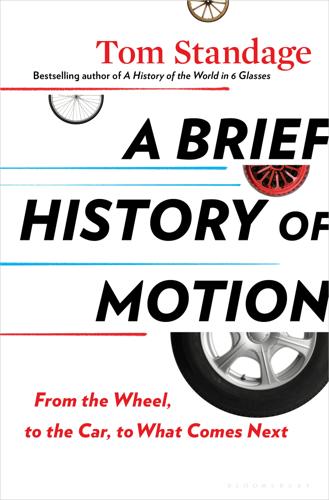
A Brief History of Motion: From the Wheel, to the Car, to What Comes Next
by
Tom Standage
Published 16 Aug 2021
Speakers built into the benches played a commentary that, as Business Week put it, “unfolds a prophecy of cities, towns and countrysides served by a comprehensive road system.” For Americans emerging from the Great Depression as a new world war was breaking out in Europe, Futurama offered a hopeful vision of a better future. That future, based on the “free-flowing movement of people and goods,” would be built around the car. The exhibit was sponsored by General Motors. The Futurama exhibit at the 1939 New York World’s Fair depicted a utopian future built around cars and “magic motorways.” Futurama had been conceived by Norman Bel Geddes, an industrial designer who advocated for building a network of express highways across America, both between cities and within them.
…
It is true that a GM-backed company bought some streetcar operators that were later shut down, but it did so only when the decline of streetcars was already a foregone conclusion, with the aim of ensuring the operators would switch to GM-built buses. What GM definitely did want, however, was highways. Alfred Sloan, the company’s president, had insisted in 1939 that Futurama, which his company had sponsored, was intended “not as a projection of any particular highway plan or program,” but the very fact that he denied it was telling. The title of Bel Geddes’s companion book to the exhibit, Magic Motorways, was another giveaway.

The Long History of the Future: Why Tomorrow's Technology Still Isn't Here
by
Nicole Kobie
Published 3 Jul 2024
The fair was popular, opening on 30 April 1939 to more than 200,000 waiting visitors and drawing more than 44 million visitors over the two years it was open (aside from a temporary closure when the war kicked off). One of the busiest exhibits was Futurama,2 a delightfully named section of the Transportation Zone, set across the Grand Central Parkway to the west of the rest of the World’s Fair (the spot is now home to Queens Zoo). Sponsored by General Motors, Futurama drew thousands of visitors every day, who waited in snaking queues to clamber into comfortable seats in a theme park-style ride that soared for 16 minutes above a 3,200-square metre (35,000-square foot) scale model of an American city, complete with half a million buildings and 50,000 cars, offering a glimpse of the ‘motorways of the world of tomorrow’.
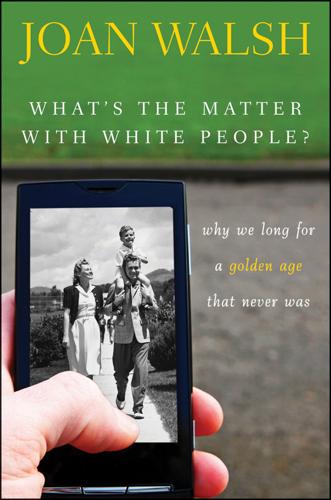
What's the Matter with White People
by
Joan Walsh
Published 19 Jul 2012
Disneyland left California for New York, with its schmaltzy global village pavilion “It’s a Small World After All.” My mother’s venerated old employer, General Motors, sponsored an exhibit called Futurama 2, updating Norman Bel Geddes’s vision of a glorious highway-linked American future that had stunned the 1939–1940 New York World’s Fair. In this new Futurama, the entire world is linked by global highways that cut through oceans, rain forests, mountains, polar ice caps, and even outer space (all traveled by presumably GM-made vehicles). The exhibit culminated in the city of the future, and Futurama seemed to be trying to reassure us that the urban experiment would work out in the end.

Smart Cities: Big Data, Civic Hackers, and the Quest for a New Utopia
by
Anthony M. Townsend
Published 29 Sep 2013
In 1939, the Regional Planning Association of America, their national organization in the United States, produced a film that captured the excitement surrounding the scientifically designed, technologically powered transformation of the nation. Screened at the same World’s Fair in New York that featured General Motors’ Futurama exhibit, the film heralded a vision directly descended from the Garden City. “We see homes with grass, children riding bicycles, and men walking to work in clean factories and playing softball,” recount historians Robert Kargon and Arthur Molella. It prefigured today’s smart city ambitions.

Ghost Road: Beyond the Driverless Car
by
Anthony M. Townsend
Published 15 Jun 2020
“self-driving,” 38 early self-steering schemes, 5–6 modern-day myths about future, xv–xvi scan, study, and steer as basic tasks, 34–38 self-driving shoes, 52, 53 three big stories of the driverless revolution, 16–20, 187–88, 238, 248, 253 see also financialization of mobility; materialization; self-driving vehicle research; specialization driving as coming-of-age story, 21–22 cruise control and, 24–25, 26 decline in teen driving, 22–23 distracted driving, 25, 28–29, 32–33 drinking and, 24 graduated licensing, 23 drones, 40, 127, 246–47 EasyMile, 60, 103–4, 104 Ebee, 129 e-commerce, 17, 117, 118–19, 120 see also Amazon; continuous delivery Edgar, John, 247 electrification and automation as symbiotic technologies, 54–55 electronic tolling, 169–72 Endeavor space shuttle, 74 English Civil War, 161 e-Palette, 125, 142 EUREF, 129 Evans, Alex, 116 éX-Driver (anime series), 149–50 Facebook, 67 fear of intelligent automobiles, 39, 43, 45 FedEx, 27, 130 “fifth-generation” (5G) wireless grid, 42 financial crisis of 2007–2008, 7, 164, 182 financialization, general, 163–64 financialization of mobility curb pricing and curb-access fees, 220–21, 222–23 electronic tolling, 169–72 monetization of vehicle owner data, 32 overview, 17, 163–65, 244 realignment of money and power, 181–83 see also congestion pricing first mile, 60 fleet learning, 37 Florida Automated Vehicles Summit, 55 Ford, Henry, 12 Ford Motor Company, 12, 32, 58, 218–19, 231, 233 forecasting vs. predicting the future, 13 free roads, end of, 163, 165 free transfer in transit system, 89, 90, 91 Frey, Carl Benedikt, 153, 154, 236 Frost, Robert, 249 fulfillment centers and distribution centers, 121, 123, 132, 136–37, 152, 158, 196n fulfillment zone, 187, 188, 196–99, 198–99 Futurama (1939 World’s Fair), 5 future car of the 1950s, 50–52, 51 Future of Humanity Institute, 238 future shock, 120 Gao Lufeng, 65 Gates, Bill, 237–38 General Motors (GM) AVs tested in San Francisco, xv disengagements by Chevy Bolts, 41 Futurama (1939 World’s Fair), 5 in-car surveillance and driver monitoring, 32 Super Cruise, 29 Gensler, 191 ghost cars, 27 ghost Main Street businesses, 140–42 ghost restaurants, 139–40, 197 ghost road, defined, xvi Gibson, Mel, 28 Gibson, William, 10, 245 GitHub, 248 Glaeser, Edward, 130, 206 Goldsmith, Stephen, 222 Google ambitions, 183 Android operating system, 7 busing of workers, 100 self-driving car project, xiv–xv, 7, 8, 35, 84, 133, 230 and vehicular specialization, 54 Waze acquired by, 87 see also Waymo Gould, Jay, 180 GPS tracks, 35 Grab, 177 graduated licensing, 23 Green Summit, 139 guardian angels, 246–47 Hackett, Jim, 32 Hawking, Stephen, 237–38 Heppner, Henning, 129 Herron, Ron, 74 Hidalgo, Anne, 220 highwaymen (England’s East Midlands), 161 Hitachi, 67, 79 HopSkipDrive, 95 horsecars, 174–75 houses, increased size of, 116 human intelligence tasks (HITs), 41 IBM, 36 Icebox, 243–44 IDEO, 125 IKEA, 72–73 Image of the City, The (Lynch), 228–30 immutable objects, 49 Impellitteri, Vincent, 165 Induct, 103, 104 infill housing, 204, 253–55 informal transit, 99–100, 106 Inrix, 9 Intel, 8, 35 “Introducing the self-driving bicycle in the Netherlands,” 62 Intuit, 125 Jacobs, Jane, 57, 228 JD.com, 118, 119, 137 Jelbi MaaS app (Berlin), 109, 110, 216 Jevons paradox, 144–45 Jevons, William Stanley, 143–44, 145 just-in-time inventory approaches, 157 Ju, Wendy, 40 Kalanick, Travis, 140, 179 Kamen, Dean, 62 Keller, David H., 84–85, 94 Keolis, 104 Khashoggi, Jamal Ahmad, 178 Khosrowshahi, Dara, 98, 179 Kia, 31 Kim, Sangbae, 46 King, David, 132, 247 King, Steven, 42 kipple, defined, 142–43 Kitchen United, 139 Kiva Systems, 136, 137 Kiwibots, 57 Knightley’s (Wichita, KS), 192 Koch, Charles and David, 40 Kohlhase, Janet, 130, 206 Kohn Pedersen Fox, 209, 211 Koolhaas, Rem, 206 KPMG, 117, 218 Kurzweil, Ray, 234 Ladd, Brian, 80 last mile continuous delivery and, 121–29 conveyors and, 124–25 cost savings, 130 driverless shuttles, 60, 123n falling costs and demand, 130–32, 131 in food delivery, 140, 147 freight AVs, 125–26, 130 Hannah school buses, 127 nighttime delivery, 128–29, 130, 217 origin of term, 122 package lockers and, 127, 130, 219, 221 piggybacking deliveries, 126–27 term use in shipping, 123n legibility, 229–30, 231 Legible London, 230 Leonhardt, David, 8–9 Les Vergers Ecoquartier (Switzerland), 202 Levandowski, Anthony, 40, 68 Levy, Frank, 150, 151, 152 lidar, 34–35 Ligier Group, 103 Lime Bike, 67 “Living Machine, The” (Keller), 83–85, 94, 237 loss aversion, 50 Lowe’s, 116 Lufa Farms, 147 Luks, George, 174 Lyft competition with Uber, 177–78, 179 initial public offering, 97, 177 market cap, 97 number of vehicles, 10 relationship with transit, 215 specialization and variety of rides, 95, 96 subscriptions, 244 taxibots, 97 traffic congestion and, 168 Lynch, Kevin, 228–30 MaaS.

Aerotropolis
by
John D. Kasarda
and
Greg Lindsay
Published 2 Jan 2009
He famously held up a flight home to Newark, refusing to deplane there because his ticket said “New York.” The crew complied, dumping him at an airstrip in Queens instead. La Guardia’s airport, originally called Municipal Field, snatched those flights away from Newark before it even opened, in time for the 1939 World’s Fair next door in Flushing. (Incidentally, the hit of the fair was General Motors’ Futurama, offering a sneak peek of the autopia it was plotting.) If you do this and you win, I asked, then who loses? Does Chicago have to fall for Detroit to prevail? Is this a win-win or a zero-sum game? “We’re in a fight with the rest of the world, not just Chicago,” Ficano countered. “We’re in a fight with Beijing, Shanghai, Dubai, Chicago, and New York,” ticking them off on his fingers.

Life Inc.: How the World Became a Corporation and How to Take It Back
by
Douglas Rushkoff
Published 1 Jun 2009
Westinghouse’s promotional film The Middleton Family represented America’s plight through the experience of one family. While the daughter was seduced by a “radical thinking” boyfriend, corporations offered the family a life of abundance. The film depicts a consumer paradise—not a worker reality—in which machines did all the work and the family could enjoy a world filled with entertainment. GM’s “Futurama” exhibit, designed by Norman Bel Geddes, conveyed people through scenes of an automotive utopia characterized by “accident-free” highways and idealized suburbs. By the time World War II was breaking out in Europe, American businessmen had a hard time deciding which side to support. For the most part, it didn’t matter: nations at war were good customers, no matter their political ideology.
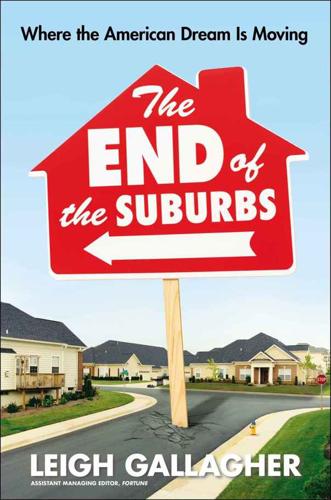
The End of the Suburbs: Where the American Dream Is Moving
by
Leigh Gallagher
Published 26 Jun 2013
So why have Americans continued to be so obsessed with owning a house in the suburbs? This wasn’t exactly an accident, either. Almost as soon as we started building the modern suburbs, we began viewing them as an ideal, almost magical way of life. At the 1939 World’s Fair in New York, General Motors presented a now-famous exhibit, “The Futurama,” that showed what the American landscape might look like twenty years into the future. The model featured a vast network of suburbs overlaid with an intricate web of high-speed “magic motor-ways.” It was a car-centric vision of the future, it was awe-inspiring, and it actually seemed within reach.
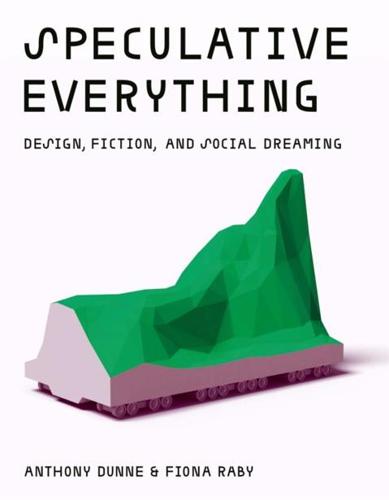
Speculative Everything: Design, Fiction, and Social Dreaming
by
Anthony Dunne
and
Fiona Raby
Published 22 Nov 2013
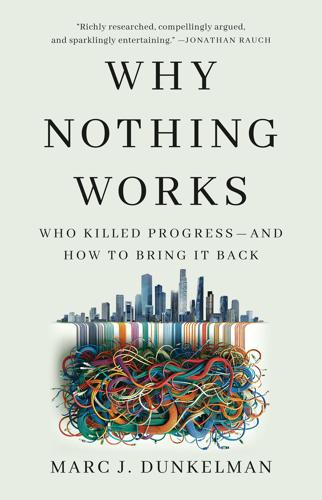
Why Nothing Works: Who Killed Progress--And How to Bring It Back
by
Marc J Dunkelman
Published 17 Feb 2025
To be eligible, state governments were forced to consolidate roadbuilding power in the hands of the expert officials who would begin using scientific methods to choose where the roads would be built.37 This was Hamiltonian progressivism in its early glory—but there was more to come. By the latter part of the 1930s, as Americans began to place even greater confidence in public authority, many began to dream more seriously about a system of national highways. In 1939, the same year General Motors sponsored a Futurama exhibit at the New York World’s Fair sensationalizing expressways, the Bureau of Public Roads published a book, Toll Roads and Free Roads, exalting how modern roadways could work to fix the nation’s teeming, impoverished, and often fetid cities. As with “slum clearance,” many imagined that government could use new highways to spring those trapped in squalid neighborhoods by razing dilapidated homes and speeding access to cities from farther away.38 The progressive mandate to connect isolated places was morphing into imagining ways of fixing purportedly broken ones as well.
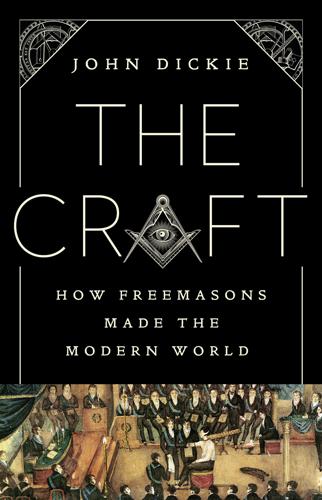
The Craft: How Freemasons Made the Modern World
by
John Dickie
Published 3 Aug 2020
Formica built a World’s Fair House on the site: this seven-room home made every conceivable use of plastic, including wipe-clean walls inside and out. Sweets were factory-made before spectators’ eyes in the Chunky Candy Corporation Pavilion. Walt Disney’s ‘Audio-Animatronics’–talking robots–amazed all comers when they were deployed in several pavilions. General Motors epitomised the spirit of the event with the vast and highly popular ‘Futurama’ attraction, a cavalcade of awe-inspiring technologies that lay just over the horizon, including lunar crawlers, commuter suburbs in space, underwater motels and laser tree cutters to slice down the world’s forests with ease. The Hall of Magic, sponsored by General Cigar, expressed ‘the magic of the future’ with a machine that blew twenty-foot smoke rings high in the air.
…
The feeling was crystallised by the musical entertainment on offer: the Beatles were there only as bad waxworks; the real thing was shunned in favour of Guy Lombardo and his Royal Canadians, who had been playing the same ‘sweetest music this side of Heaven’ since 1924. The Masonic Brotherhood Center’s worthy exhibits could not compete with what Time magazine called the ‘whoosh and voom’ of the World’s Fair, its ‘gimcrack sorcery’. The Masons did not get near the visitor numbers of the biggest attractions: General Motors’ massive investment in ‘Futurama’ paid off with 29 million visitors, and 27 million rode the conveyor belt past Michelangelo’s Pietà. But a tally for the Masons of 1.25 million was highly respectable. The Grand Lodge of New York was rightly proud of the show it had put on, and of the $52,875.32 made for charity in the first season alone; the beneficiaries would be the children in an upstate Masonic care home.

Evil Geniuses: The Unmaking of America: A Recent History
by
Kurt Andersen
Published 14 Sep 2020
My most vivid memory of my tenth year was a trip to Chicago, my first to a big city, and the afternoon we spent at the Museum of Science and Industry, where I had a long-distance Picturephone conversation with a stranger at the Bell System’s World’s Fair pavilion in New York City. General Motors’ fair pavilion was called Futurama. General Electric’s, called Progressland, had been designed by the Disney Company, and Walt was at that moment dreaming up his masterwork in Florida, the Experimental Prototype City of Tomorrow, EPCOT. A majority of American women making themselves appear new by coloring their hair (and a small minority by surgically enhancing their faces and bodies) was a new phenomenon.

The Industries of the Future
by
Alec Ross
Published 2 Feb 2016
“Robots are going to become”: Ken Goldberg, phone interview with Ari Ratner, October 4, 2013. Just as it would have been difficult: “Statistics,” YouTube, https://www.youtube.com/yt/press/statistics.html; “Follow the Audience . . . ,” YouTube Official Blog, May 1, 2013, http://youtube-global.blogspot.com/2013/05/yt-brandcast-2013.html. General Motors introduced: “The Original Futurama,” Wired, November 27, 2007, http://www.wired.com/entertainment/hollywood/magazine/15-12/ff_futurama_original. Radar was a device on a hilltop: Burkhard Bilger, “Auto-Correct,” New Yorker, November 25, 2013, http://www.newyorker.com/reporting/2013/11/25/131125fa_fact_bilger?currentPage=2.
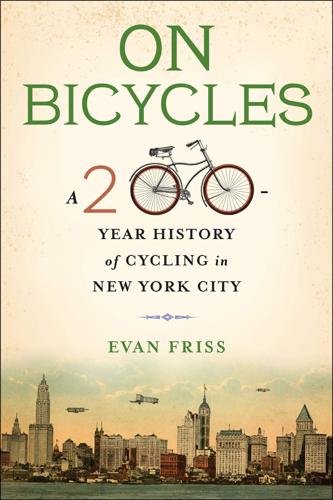
On Bicycles: A 200-Year History of Cycling in New York City
by
Evan Friss
Published 6 May 2019
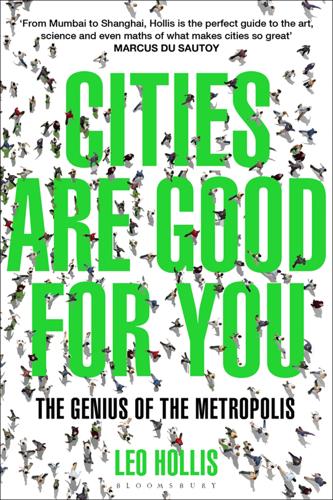
Cities Are Good for You: The Genius of the Metropolis
by
Leo Hollis
Published 31 Mar 2013
When he was not allowed to build a bridge between Brooklyn and Battery Park at the southern tip of the island, he was given permission to dig the Brooklyn Battery Tunnel. At the end of the decade he was able to dream of a completely new city when he was put in charge of the 1939 World Fair, held at Flushing Meadow, and dedicated to the ‘world of tomorrow’. Moses co-opted General Motors to sponsor the Futurama display. It was a city, inevitably, that was created around the car: the city centre was replaced by vast highways lined by skyscrapers, embedded in parkland; suburbs were linked together by clean expressways. As the designer Norman Bel Geddes announced, ‘Speed is the cry of our era’; the ease and security of a life sealed within the carapace of the automobile, hurtling through the city without obstacles, the perfection of velocity replacing unpredictable human contact.

The Rough Guide to New York City
by
Martin Dunford
Published 2 Jan 2009
Robert Moses intended this park to be the “Versailles of America,” but the severe, perfectly symmetrical pathways radiating out from the sphere, The world comes to Queens In late April 1939, as the US emerged from the Great Depression and war loomed, 1200 acres of the new Flushing Meadows–Corona Park became the stage for America’s love affair with modernity. Drawing visitors from across the nation (and delegates from 62 others), the 1939–40 World’s Fair featured displays of technologies yet to be realized, including robotics and fluorescent lights. General Motors sponsored a “Futurama” ride through a utopian modern city, and New Yorkers saw broadcast television for the first time. The fair was a great success, and brought attention to this little-known borough. In part due to the reputation established by the expo, the United Nations briefly operated from here following World War II.

The Rough Guide to New York City
by
Rough Guides
Published 21 May 2018
The world comes to Queens In late April 1939, as the US emerged from the Great Depression and war loomed, 1200 acres of the new Flushing Meadows–Corona Park became the stage for America’s love affair with modernity. Drawing visitors from across the nation (and delegates from 62 others), the 1939–40 World’s Fair featured displays of technologies yet to be realized, including robotics and fluorescent lights. General Motors sponsored a “Futurama” ride through a utopian modern city, and New Yorkers saw broadcast television for the first time. The fair was a great success, and brought attention to this little-known borough. In part due to the reputation established by the expo, the United Nations briefly operated from here following World War II.
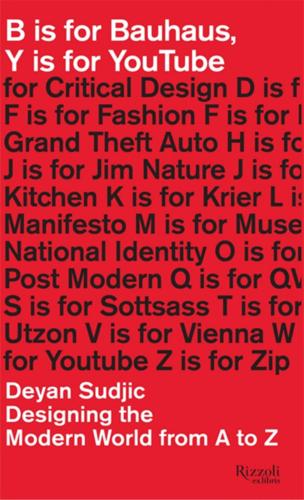
B Is for Bauhaus, Y Is for YouTube: Designing the Modern World From a to Z
by
Deyan Sudjic
Published 17 Feb 2015

Makeshift Metropolis: Ideas About Cities
by
Witold Rybczynski
Published 9 Nov 2010
This was in many ways an adaptation of the Voisin Plan, but Bel Geddes’s vision of the urban future was far more expansive than Le Corbusier’s, and the cities in Futurama were surrounded by sprawling suburban communities, connected to one another by a network of superhighways. Since the exhibit was part of the General Motors pavilion, the model was equipped with thousands of tiny moving cars. On leaving Futurama each visitor received a blue-and-white lapel button reading I HAVE SEEN THE FUTURE. It didn’t take twenty years for the future to arrive, however. Only four years after the World’s Fair closed, the Metropolitan Life Insurance Company, encouraged by Robert Moses, started to build a series of unusual residential projects in New York City.
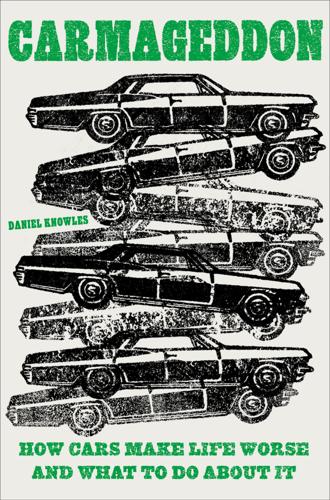
Carmageddon: How Cars Make Life Worse and What to Do About It
by
Daniel Knowles
Published 27 Mar 2023
The New York Herald Tribune mocked him up in a cartoon looking through Coke bottle glasses, overly inspired by the possibilities of rebuilding America. But his tour was a success. “This is architecture’s hour,” he said on a radio broadcast, which was widely reported. Four years later, General Motors hosted an exhibit at New York City’s World’s Fair entitled Futurama, designed by Norman Bel Geddes. Its “vision of the future” looked like something Le Corbusier could have designed. A scale model spread across an acre depicted a city of towers and parks—and highways, eighteen lanes wide. It featured more than 50,000 model cars and 500,000 individual buildings.
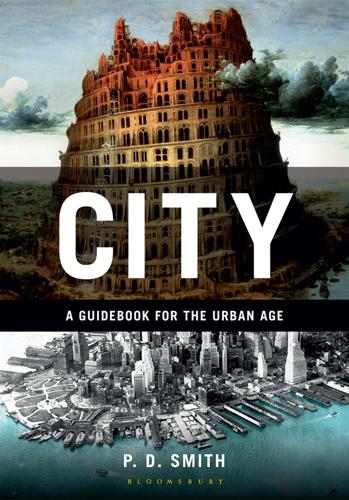
City: A Guidebook for the Urban Age
by
P. D. Smith
Published 19 Jun 2012
The 1939 New York World’s Fair and the 1949 Stockholm World’s Fair started a fashion for utopian speculation about the ‘World of Tomorrow’ (the theme at New York). The most popular exhibit at New York was Democracity, a diorama of the ‘city of the future’, designed by Henry Dreyfuss and housed in the strikingly spherical Perisphere building. In the General Motors pavilion, Norman Bel Geddes’s Futurama anticipated what the city would look like in 1960, focusing in particular on the impact of the automobile on future life. Some twenty-five million awestruck people visited. Shanghai’s 2010 Expo had an urban theme: ‘Better City – Better Life’. It is thought that staging the event cost the Chinese government as much as $58 billion (£38 billion), more than the 2008 Beijing Olympics.
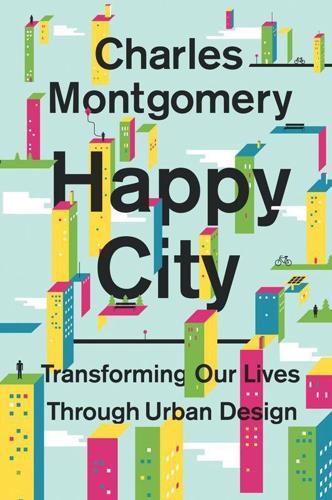
Happy City: Transforming Our Lives Through Urban Design
by
Charles Montgomery
Published 12 Nov 2013
Various conspiracy theories have argued that this was a plan to force people to buy cars by eliminating public transit. This may have been true, but it was hardly necessary. The streetcar had been fatally wounded when the definition of the street changed. It drowned in a sea of cars. Futurama LEFT: The future is revealed at the vast General Motors pavilion for the 1939 World’s Fair in New York: a city built for cars. RIGHT: The Futurama vision has now been built into cities around the world. The fourteen high-speed lanes of Dubai’s de facto main street, Sheikh Zayed Road, are impossible for pedestrians to cross for miles at a time. (Left: GM Media Archive; right: Charles Montgomery) The final assault on the old city arrived via the interstate highway system.

Age of the City: Why Our Future Will Be Won or Lost Together
by
Ian Goldin
and
Tom Lee-Devlin
Published 21 Jun 2023

Consider the Fork: A History of How We Cook and Eat
by
Bee Wilson
Published 14 Sep 2012
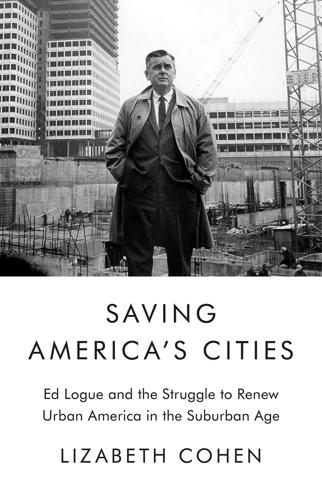
Saving America's Cities: Ed Logue and the Struggle to Renew Urban America in the Suburban Age
by
Lizabeth Cohen
Published 30 Sep 2019
Exhibitions, many sponsored by auto manufacturers eager to sell cars and, even more importantly, to sell Americans on the nation’s need to invest heavily in massive highway construction, hammered home that the automobile was the key to social and economic progress. At the New York World’s Fair of 1939–40, with its theme of “Building the World of Tomorrow,” the biggest hit was the General Motors “Highways and Horizons” pavilion, featuring a sixteen-minute “Futurama” conveyor-belt ride. Twenty-eight thousand visitors a day peered down from moving armchairs onto a thirty-six-thousand-square-foot miniaturized model of the United States as imagined in 1960. In this America of tomorrow, multilane “Magic Motorways” traversed the landscape, safely accommodating automobile speeds up to a hundred miles an hour as they shot across elevated overpasses and wide-span suspension bridges, through rugged mountain passes, and around dramatic cloverleafs.
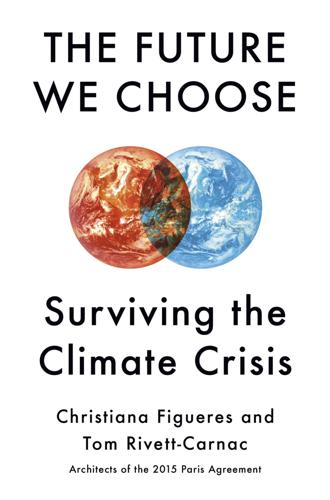
The Future We Choose: Surviving the Climate Crisis
by
Christiana Figueres
and
Tom Rivett-Carnac
Published 25 Feb 2020
It took Emmeline Pankhurst and the suffragette movement slightly more than a decade to force the British government to give women the right to vote.14 The Soviet Union seemed so solid as to be eternal, but once cracks started to appear, the edifice crumbled in just a few months.15 In 1939 General Motors presented visitors to the World’s Fair in New York City with an imaginative vision of what the future could look like. It was called Futurama and consisted of an enormous model of multiple high-rise buildings, vast suburbs, and large motorways for travel between them, necessitating the use of cars.16 Imagination is going to be critical as we work to transform today’s urban sprawl to make it fit for the future.
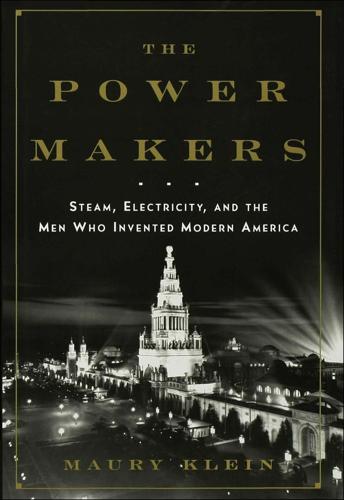
The Power Makers
by
Maury Klein
Published 26 May 2008
The kitchen of the future was a marvel, Ned agreed, but it had come too late for him to enjoy.9 The future was everywhere around him, or so the exhibits promised. He wandered across the Bridge of Wings to the Transportation Zone. The General Motors complex of four interconnected buildings used the theme “Highways and Horizons” for the largest individual exhibit at the fair. Ned joined the long line and waited patiently for the Futurama, which had become the biggest hit at the fair. Once through the imposing sloped entrance, he slipped into one of 552 paired seats fitted with individual speakers that carried a soothing narrative. Below him, covering thirty-six thousand square feet, la y a model of a highway system as imagined in a metropolis of 1960, with seven-lane expressways monitored by radio control towers that allowed speeds as high as a hundred miles an hour.